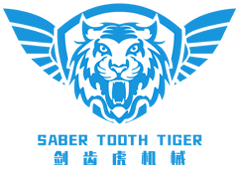24
2025
-
06
Understanding the Versatility of Busbar Cutting, Bending, and Punching Machines
In the realm of manufacturing and processing machinery, the busbar cutting, bending, and punching machine stands out as a versatile tool, particularly within industries that require precision fabrication, such as leather processing. These machines serve a crucial role in the production of busbars—conductive bars used in electrical distribution systems. However, their utility extends beyond the ele
In the realm of manufacturing and processing machinery, the busbar cutting, bending, and punching machine stands out as a versatile tool, particularly within industries that require precision fabrication, such as leather processing. These machines serve a crucial role in the production of busbars—conductive bars used in electrical distribution systems. However, their utility extends beyond the electrical domain, making them indispensable in various sectors.
Busbars are typically made from copper or aluminum and are used for power distribution in electrical panels and switchgear. The process of cutting, bending, and punching busbars is pivotal, as these tasks ensure that busbars fit appropriately within the required assemblies. A cutting machine efficiently slices through the raw materials to achieve the desired lengths, while bending machines shape the busbars into specific angles, accommodating intricate designs and layouts. Punching machines, on the other hand, drill holes for connections and mounting points, ensuring that the busbars can be integrated seamlessly into larger systems.
One of the primary advantages of using a busbar cutting, bending, and punching machine is the increase in production efficiency. Automating these processes reduces the time and labor involved compared to manual methods, allowing manufacturers to scale operations and meet higher demands without compromising quality. The precision offered by these machines minimizes material waste, ensuring that every cut and bend is accurate, which is vital in industries where adherence to specifications is critical.
Moreover, modern machines are often equipped with advanced technology that allows for programmable functions. This feature enables operators to create various profiles and customize operations according to specific project requirements. Such flexibility is ideal for companies looking to adapt quickly to market changes or unique client needs.
Maintenance and operator training are essential components to maximize the benefits of these machines. Regular maintenance ensures longevity and consistent performance, while training equips operators with the necessary skills to utilize the machines effectively, enhancing safety and productivity on the shop floor.
In conclusion, the busbar cutting, bending, and punching machine is a cornerstone in the manufacturing process for both busbars and leather products. Its ability to streamline production, coupled with precision and adaptability, makes it an invaluable asset for any manufacturing operation. As industries continue to evolve, investing in such machinery will likely lead to substantial improvements in efficiency and product quality.
Busbars are typically made from copper or aluminum and are used for power distribution in electrical panels and switchgear. The process of cutting, bending, and punching busbars is pivotal, as these tasks ensure that busbars fit appropriately within the required assemblies. A cutting machine efficiently slices through the raw materials to achieve the desired lengths, while bending machines shape the busbars into specific angles, accommodating intricate designs and layouts. Punching machines, on the other hand, drill holes for connections and mounting points, ensuring that the busbars can be integrated seamlessly into larger systems.
One of the primary advantages of using a busbar cutting, bending, and punching machine is the increase in production efficiency. Automating these processes reduces the time and labor involved compared to manual methods, allowing manufacturers to scale operations and meet higher demands without compromising quality. The precision offered by these machines minimizes material waste, ensuring that every cut and bend is accurate, which is vital in industries where adherence to specifications is critical.
Moreover, modern machines are often equipped with advanced technology that allows for programmable functions. This feature enables operators to create various profiles and customize operations according to specific project requirements. Such flexibility is ideal for companies looking to adapt quickly to market changes or unique client needs.
Maintenance and operator training are essential components to maximize the benefits of these machines. Regular maintenance ensures longevity and consistent performance, while training equips operators with the necessary skills to utilize the machines effectively, enhancing safety and productivity on the shop floor.
In conclusion, the busbar cutting, bending, and punching machine is a cornerstone in the manufacturing process for both busbars and leather products. Its ability to streamline production, coupled with precision and adaptability, makes it an invaluable asset for any manufacturing operation. As industries continue to evolve, investing in such machinery will likely lead to substantial improvements in efficiency and product quality.
Related news





